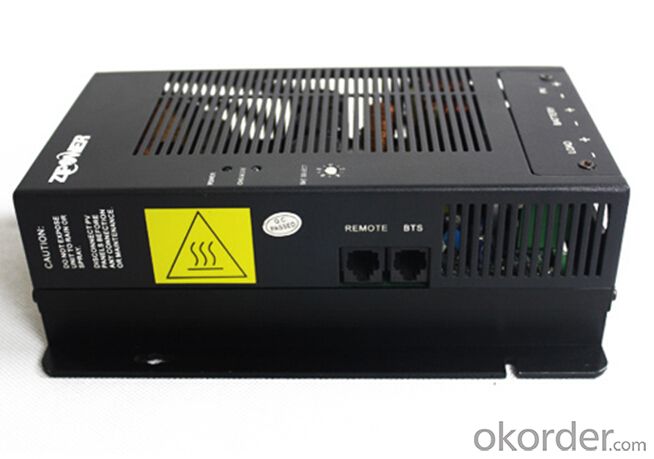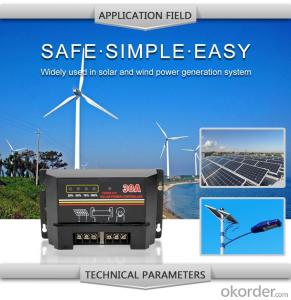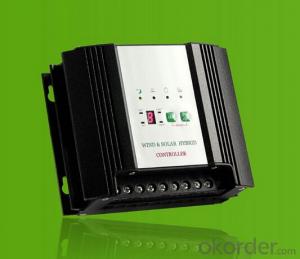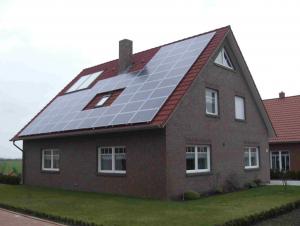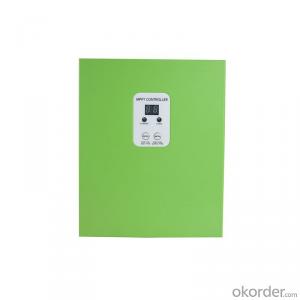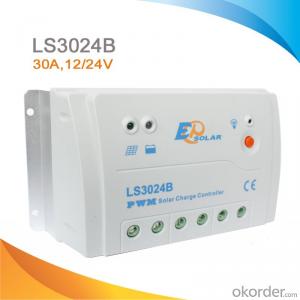Grape Solar PWM Controllers - Solar Charge Controller 12/24V Model SL-40A MPPT
- Loading Port:
- Shekou
- Payment Terms:
- TT OR LC
- Min Order Qty:
- 20 pc
- Supply Capability:
- 300 pc/month
OKorder Service Pledge
OKorder Financial Service
You Might Also Like
1. Structure of Solar Charge Controller 12/24v Model SL-40A MPPT
Solar charge controller 12/24V Model SL-40A MPPT adopts advanced MCU microprocessor control technology and MPPT technology. And 12V/24V can detect by itself to choose output voltage. It is mainly used for solar power station, home solar power system, solar street light control system,mobile solar system.
2. Main Features of Solar Charge Controller 12/24v Model SL-40A MPPT
High converting efficiency higher than 97%for minimizing energy loss
Build-in MPPT tracker for optimizing the power transformation
Reversed current protection for preventing equipment damage
Automatic battery temperature compensation for long-term reliability
Capable of selecting different charging mode for various type of batteries
Capable of connecting additional DC load for wider applications
Three stage charge control system(bulk,absorption, and float mode)with temperaturecompensation
LED indicators display charge status in real time
Pulse width modulation(PWM)topology combined with a multi-stage charge control algorithm leads to superior charging and enhanced batteryperformance
3. Solar Charge Controller 12/24v Model SL-40A MPPT Images
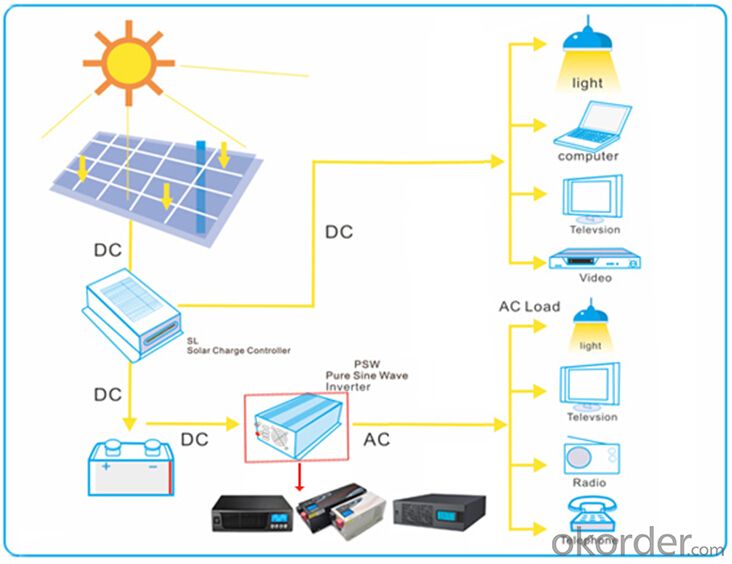

4. Solar Charge Controller 12/24v Model SL-40A MPPT Specification
| MODEL | SL-40A | |
| Rated Voltage | 12/24VDC | |
| Rated charge current | 40A | |
| Load current | 15A | |
| Input voltage rang | 15-55VDC | |
Max.PV open circuit array voltage | 55VD | |
| Typical idle consumption | <10mA | |
Overload protection (DC load) | 2.0*inom>5s 1.5*inom>20s 1.25*inom temperature controlled | |
| Bulk charge | 14.6V (default) | 29.2V (default) |
| Floating charge | 13.4V (default) | 26.8V (default) |
| Equalization charge | 14.0V (default) | 28.0V (default) |
| Over charge disconnection | 14.8V | 29.6V |
| Over charge recovery | 13.6V | 27.2V |
| Over discharge disconnection | 10.8V(default) | 21.6V(default) |
| Over discharge reconnection | 12.3V | 24.6V |
| Temperature compensation | -13.2mv/C | -26.4mv/C |
| Lead acid battery setting | Adjustable | |
| Nicad battery setting | Adjustable | |
Load control mode
| 1. Low Voltage Reconnect (LVR): Adjustable 2. Low Voltage Disconnect (LVR): Automatic Disconnection 3.Reconnection:Includes warning flash before disconnect and reconnect | |
| Low voltage reconnect | 12.0-14.0Vdc | 24.0-28.0Vdc |
| Low voltage disconnect | 10.5-12.5Vdc | 21.0-25.0Vdc |
| Ambient temperature | 0-40C (full load) 40-0C (de-rating) | |
| Altitude | Operating 5000m,Non-operating 16000m | |
| Protection class | IP21 | |
| Battery temperature sensor | BTS optional remote batter temperature sensor for increased charging precision | |
5. FAQ
Q1: How long do you need to prepare mass production?
Re: Normally we need 10-18days to finish the production, but it depends on the quantity of purchase order.
Q2: What kind of payment terms do you prefer?
Re: We prefer bank transfer or L/C,
- Q: What is the load current rating of a solar controller?
- The load current rating of a solar controller refers to the maximum amount of current it can safely handle when supplying power to connected loads, such as lights or appliances. The specific rating can vary depending on the model and specifications of the solar controller.
- Q: How does a solar controller prevent damage from reverse current flow in the load?
- A solar controller prevents damage from reverse current flow in the load by using a built-in blocking diode. This diode only allows current to flow in one direction, preventing any backflow of current from the load to the solar panels. By blocking the reverse current, the solar controller ensures that the load receives power from the solar panels without any risk of damage.
- Q: Can a solar controller be connected to multiple solar panels?
- Yes, a solar controller can be connected to multiple solar panels. The purpose of a solar controller is to regulate and manage the charging process of the solar panels, ensuring optimal performance and preventing overcharging. Connecting multiple solar panels to a solar controller allows for efficient utilization of the solar energy generated by the panels.
- Q: Can a solar controller be used with solar panels that are connected to a solar lighting system?
- Yes, a solar controller can be used with solar panels that are connected to a solar lighting system. A solar controller, also known as a charge controller, is an essential component of a solar power system that regulates the flow of electrical energy between the solar panels, battery storage, and other devices. It helps prevent overcharging and over-discharging of the batteries, which can lead to damage and reduced lifespan. In the case of a solar lighting system, the solar controller plays a crucial role in managing the charging and discharging cycles of the batteries that store the energy generated by the solar panels during the day. It ensures that the batteries are charged optimally from the solar panels and that the stored energy is efficiently utilized for lighting purposes during nighttime. By using a solar controller, one can maximize the efficiency and lifespan of the solar lighting system by protecting the batteries from excessive voltage and current fluctuations. Additionally, some solar controllers also provide features like load control, which allows users to manage the power consumption of the lighting system and extend battery life. Therefore, incorporating a solar controller into a solar lighting system connected to solar panels is highly recommended to ensure proper and efficient operation of the system.
- Q: Can a solar controller be used in a solar-powered heating system?
- Yes, a solar controller can be used in a solar-powered heating system. A solar controller regulates the flow of electricity from the solar panels to the heating system, ensuring optimal performance and preventing damage to the system. It helps manage the temperature and power output, allowing the heating system to efficiently utilize the solar energy for heating purposes.
- Q: What is the maximum number of load control modes supported by a solar controller?
- The maximum number of load control modes supported by a solar controller can vary depending on the specific model and manufacturer. However, most solar controllers typically support around 4 to 5 load control modes, allowing users to customize and optimize their energy usage according to their specific needs and preferences.
- Q: Can a solar controller be used with solar-powered water pumps?
- Yes, a solar controller can be used with solar-powered water pumps. A solar controller helps regulate the flow of electricity from the solar panels to the water pump, ensuring efficient and optimal operation of the pump. It can also protect the pump from damage caused by overvoltage or other electrical issues.
- Q: What is the maximum power rating of a solar controller?
- The maximum power rating of a solar controller depends on the specific model, but it typically ranges from 10 to 60 amps.
- Q: How does a solar controller handle electromagnetic interference?
- Various techniques and components are employed in the design of a solar controller to address electromagnetic interference (EMI). EMI can arise from nearby electronic devices, power lines, or radio frequency sources, and it has the potential to negatively affect the solar controller's performance and reliability. Shielding is one of the primary methods utilized by a solar controller to mitigate EMI. Typically, the controller is enclosed within a metal or conductive enclosure that acts as a shield, safeguarding the internal circuitry from external electromagnetic waves. This shielding effectively contains the electromagnetic fields generated by nearby sources, preventing them from interfering with the operation of the controller. In addition to shielding, a solar controller incorporates various filtering components to suppress EMI. These components, such as capacitors, inductors, and ferrite beads, are strategically placed within the controller's circuitry to mitigate and absorb unwanted electromagnetic energy. Acting as barriers, they block or redirect high-frequency noise, preventing it from reaching sensitive components. The design and layout of the solar controller's circuit board also play a crucial role in managing EMI. Employing proper grounding techniques and carefully routing signal traces assist in reducing the controller's susceptibility to electromagnetic interference. Ground planes and signal isolation techniques are implemented to minimize the coupling of unwanted electromagnetic energy into the controller's internal circuitry. To ensure adherence to EMI regulations and standards, solar controllers undergo rigorous testing and certification processes. These tests assess the controller's capacity to function correctly and endure in the presence of electromagnetic interference. Compliance with these standards guarantees the solar controller's reliable performance while avoiding the introduction of harmful interference to other electronic devices. In conclusion, a solar controller effectively deals with electromagnetic interference by utilizing shielding, filtering components, appropriate circuit board design, and compliance with EMI regulations. Collectively, these measures minimize the impact of external electromagnetic waves and ensure the dependable operation of the solar controller in diverse environments.
- Q: Can a solar controller be used with solar panels that are connected to a solar street light?
- Solar panels connected to a solar street light can indeed utilize a solar controller. A solar controller, also referred to as a charge controller, plays a vital role in a solar power system by regulating the flow of electricity from the solar panels to the battery. This regulation prevents both overcharging and over-discharging. In the case of a solar street light, the solar panels generate electricity during the daytime and charge the battery through the assistance of the solar controller. The solar controller guarantees that the battery reaches its optimal capacity and shields it from potential damage due to overcharging. During nighttime, the solar controller efficiently utilizes the battery's power to illuminate the street light. Hence, a solar controller is a crucial component of a solar street light system, ensuring proper charging and effective utilization of solar energy.
Send your message to us
Grape Solar PWM Controllers - Solar Charge Controller 12/24V Model SL-40A MPPT
- Loading Port:
- Shekou
- Payment Terms:
- TT OR LC
- Min Order Qty:
- 20 pc
- Supply Capability:
- 300 pc/month
OKorder Service Pledge
OKorder Financial Service
Similar products
Hot products
Hot Searches
Related keywords



